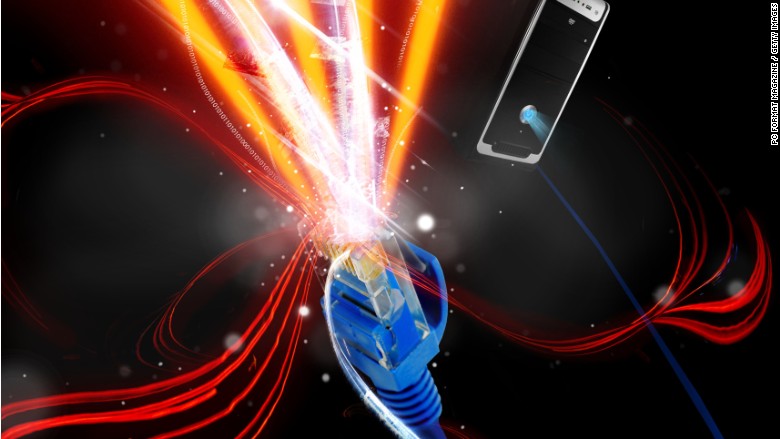
How would you like Google Fiber-like internet speeds delivered over your home phone line?
That's the promise of G.Fast. It's a new technology that can deliver blazing fast internet over the wires you already have in your home. For many, it will be the first time they'll have more than one choice for broadband.
There are still a lot of questions surrounding G.Fast: When will it be available? Who will be able to get it? And how much will it cost?
But on Monday, one crucial question was answered: How fast will it be? Very.
Israeli chipmaker Sckipio announced a new G.Fast solution that can deliver both upload and download speeds 750 megabits per second. That's 50 times faster than the broadband that you probably have coming into your home right now.
But soon even that will seem slow. The next generation of chips that could come within another year will provide double that speed for both upload and download, Sckipio said. That's 1.5 gigabits per second -- faster than anything Google Fiber offers today.
Though demonstrations of G.Fast have previously shown the technology to be capable of 750 megabit download speeds, upload speeds were significantly slower than that.
Equal upload and download speeds are becoming increasingly important, as new technologies require increasingly fast upload bandwidth. Uploading 4K videos, using virtual reality or playing video games all require super-fast upload speeds to function properly.
Related: Super-fast Internet is coming over your phone line
AT&T (T) has expressed significant interest in deploying G.Fast, because it pairs nicely with its DirecTV satellite TV service. Many customers of DirecTV still need to buy internet from their local cable company, which is expensive, or DSL internet over their phone line, which is slow.
G.Fast works just as well over coaxial cables as it does over telephone lines. Since AT&T inherited a huge amount of cable infrastructure with DirecTV (cables connect your satellite dish to your television), it wouldn't be too hard or expensive to connect those cables with AT&T's fiberoptic cable service in your neighborhood.
That means some day in the future, DirecTV could become a TV and internet service provider, powered by G.fast. AT&T hasn't given a timeline, however, for G.Fast's launch.
Sckipio says the G.Fast technology will debut in the United States later this year. It won't be available everywhere immediately, but Sckipio said a single phone company could roll it out to the entire country in just four years.
Phone companies are excited about G.Fast, because it allows them do deliver super-fast speeds without having to dig up holes in your yard to do it. Or, if you live in an apartment building, they can use the existing infrastructure to deliver fast speeds without having to rewire the entire building.
Multi-dwelling units like apartments are a particularly attractive target for phone companies. Many of those apartments are currently served by DSL Internet over phone lines. But that old technology is dreadfully inefficient: DSL can lose up to 90% of its speed by the time it gets to your modem. G.Fast loses just 5% to 10% during the same trip.
It also solves a problem of deploying fiberoptic cables everywhere, which was previously the only way to get super-fast internet speeds to customers. Bringing fiber to homes is expensive and time consuming (and sometimes requires a company to dig up your yard). Bringing fiber from the street to just to one home can cost $100,000, according to Sckipio.
By comparison, the boxes on the street that need to be installed to power G.Fast cost about $70,000. And the cost of bringing that to your home is $0, since it connects to the phone lines already installed in your house or apartment.

